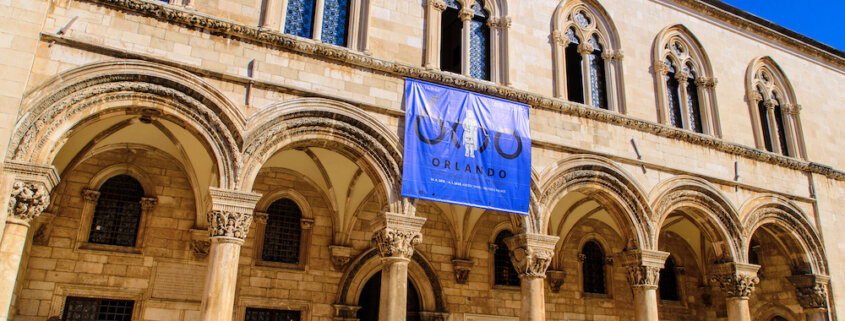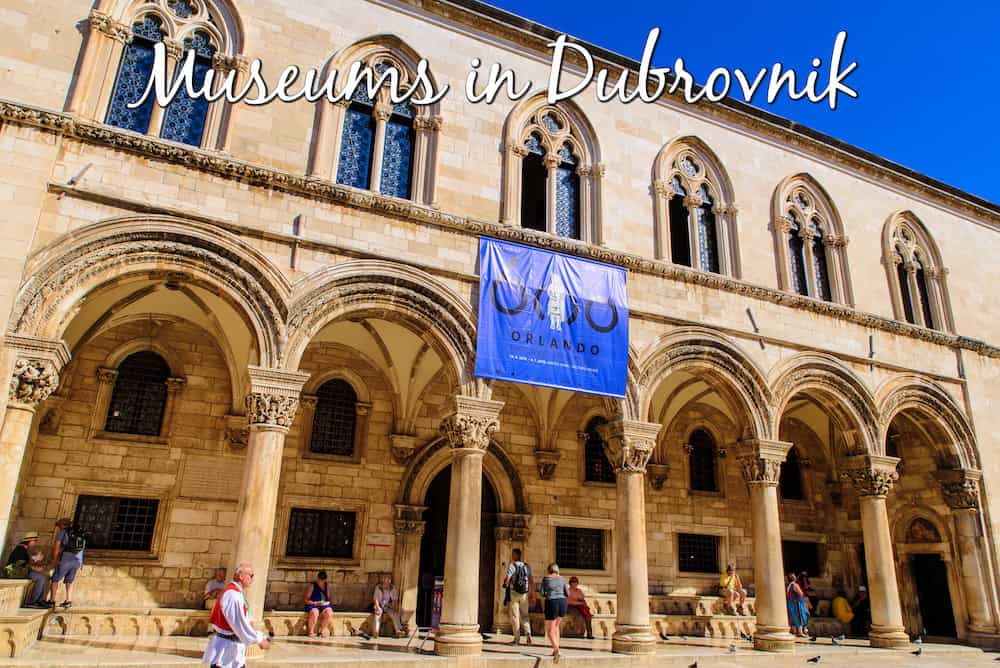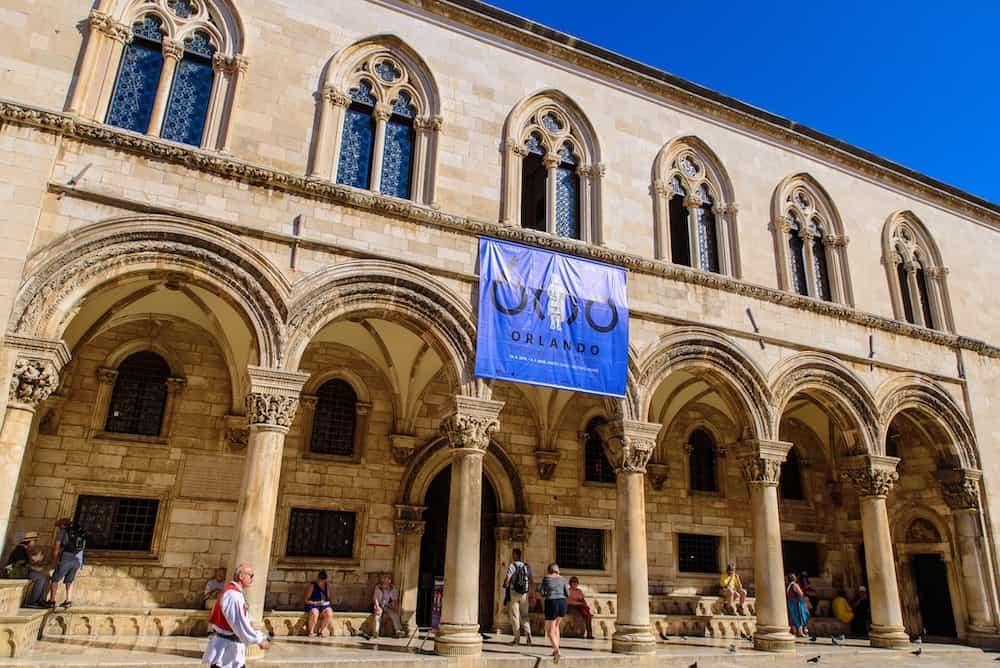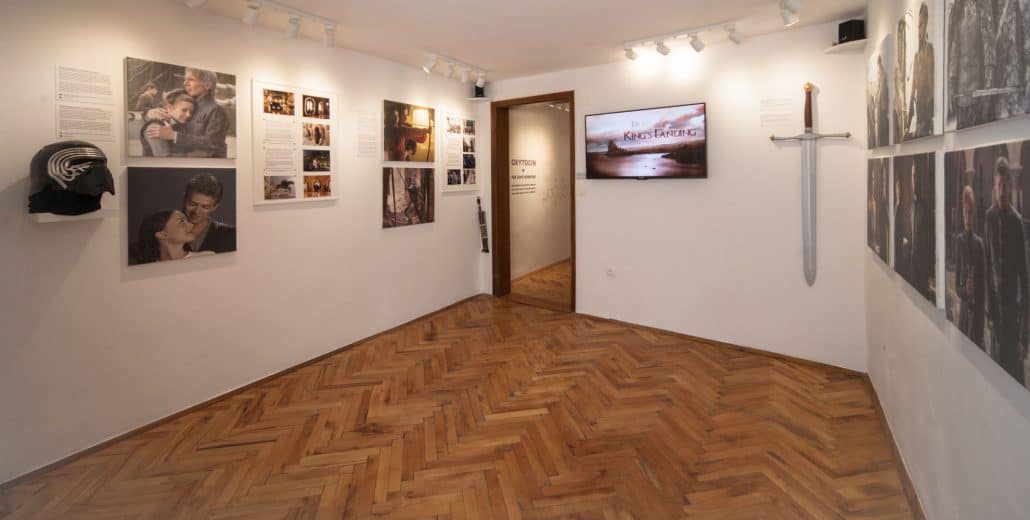
There is so much to enjoy in Dubrovnik, especially some of the amazing sights in and around the Old Town. But the city is also home to many a fine museum and gallery! Here are some of the best Museums in Dubrovnik for you to enjoy on your visit. Many of these establishments are housed in important historic buildings, so you essentially get a 2-for-1 experience by visiting the museum and and a site that’s a key part of the city’s past.
Entry into some of these institutions is free if you purchase a Dubrovnik Pass which also includes entry into the Old Town Walls, for example.

Maritime Museum
Tvrđava Sv. Ivana
Website: www.dumus.hr/en/maritime-museum
Located in St John’s Fortress – you could make a stop at this museum when walking the Old Town Walls – this museum shows the city’s long association with seafaring and past association with shipbuilding and houses all manner of items related to these activities. There’s a fascinating collection of over 500 charts and maps, some dating from the 17th century; many of these of course depict Dubrovnik and the Adriatic. There are of course items from ships themselves, including bells, cannons and compasses, decorative items and even sailor’s weapons! Also on display are items found in shipwrecks, including some rather ancient finds.
Cultural History Museum
Rector’s Palace, Ribarnica ulica 1
Website: www.dumus.hr/en/cultural-history-museum
Housing around 20,000 items of Dubrovnik’s history from the 14th century to the 20th century, including paintings, furniture and textiles, cermanic pieces, photographs, postcards and more; there are also items related to the life and work of Ivo Vojnovic, a writer who was born in Dubrovnik in 1857.

Museum of Modern Art
Put Frana Supila 23
Website: ugdubrovnik.hr
Established in 1945, the museum is housed in a rather grand villa that formerly belonged to the Banac family. This museum is home to around 3,000 works of art, mostly by artists from the Dubrovnik region. The museum has expanded and also shows works in Gallery Dulcic Masle Pulitika and Studio Pulitika.
Love Stories Museum
Od Tabakarije 2 (near Restaurant Orhan)
Website: lovestoriesmuseum.com
The Love Stories Museum is dedicated to love and romance and features love stories and items of sentimental value from around the world. Read up on other patrons’ love stories and then submit your own! You can also learn about local romantic myths and legends, whilst there’s also an exhibit on romance plots in films and TV shows that have been filmed in Dubrovnik – such as Star Wars and a little-known show called Game of Thrones.

Homeland War Museum
Imperial Fortress, Srd
Website: mdrd.hr/eng
Located in the actual Fortress that sits at the top of Mount Srd above Dubrovnik, this museum is a difficult visit at times as it relives the war in Croatia in the early 1990s and Dubrovnik’s experiences during that time. (The city was heavily bombarded during a seven-month siege.) This fort – built in the early 19th century when Dubrovnik was under Napoleonic control – served as the command headquarters for a Croatian Army Brigade. An excellent opportunity to both visit this historic fort and to learn more about the war.
War Photo Limited
Antuninska 6
Website: www.warphotoltd.com
The War Photo Museum features the brave work of photojournalists who have depicted conflicts around the world – including of course, the 1990s wars in the former Yugoslavia. There are a number of time-limited exhibitions featuring photographs from different countries as well as a permanent exhibition titled “The End of Yugoslavia”.
Red History Museum
Ulica Svetog Kriza 3
Website: www.redhistorymuseum.com
A fascinating, fully interactive museum that offers a glimpse of what it was like living in the communist (hence the “Red Museum”) country of Yugoslavia – something that Croatia was a part of for a good long time, from the end of World War II through to when the country declared independence in 1991. Learn more about this political regime and its start and dominance in the 20th century, but also what life was like for ordinary citizens during this time. There’s a reconstruction of a “typical” Yugoslavian home and even a classic Yugo car here.
